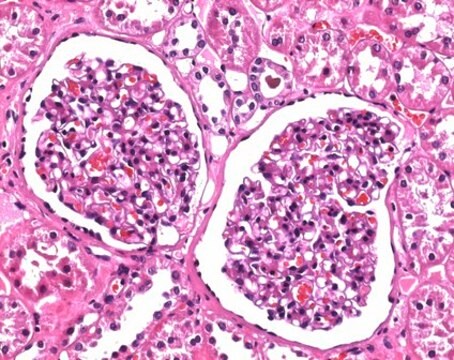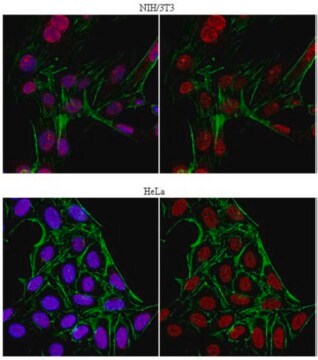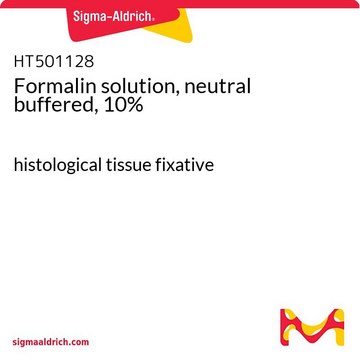17-10264
ChIPAb+ JHDM1B Antibody
from rabbit, purified by affinity chromatography
Sinónimos:
JMJD, Lysine (K)-specific demethylase 2B, F-box protein FBL10, [Histone-H3]-lysine-36 demethylase 1B, JEMMA (Jumonji domain, EMSY-interactor, methyltransferase motif) protein, F-box and leucine-rich repeat protein 10, Protein containing CXXC domain 2, Ju
About This Item
Productos recomendados
origen biológico
rabbit
Nivel de calidad
clon
polyclonal
purificado por
affinity chromatography
reactividad de especies
horse, mouse, pig, human
reactividad de especies (predicha por homología)
porcine (based on 100% sequence homology), equine (based on 100% sequence homology), chimpanzee (based on 100% sequence homology), rat (based on 100% sequence homology), rabbit (based on 100% sequence homology)
fabricante / nombre comercial
ChIPAb+
Upstate®
técnicas
ChIP: suitable
dot blot: suitable
western blot: suitable
Nº de acceso NCBI
Nº de acceso UniProt
Condiciones de envío
dry ice
Información sobre el gen
human ... KDM2B(84678)
Descripción general
The ChIPAb+JHDM1B set includes the JHDM1B antibody, a Normal Rabbit IgG, and control primers which amplify a 110 bp region of ChIP Primers, human β-globin. The JHDM1B and negative controls are supplied in a scalable "per ChIP" reaction size and can be used to functionally validate the precipitation of JHDM1B -associated chromatin.
Inmunógeno
Aplicación
Representative lot data.
Sonicated chromatin prepared from HeLa cells (1 X 10E6 cell equivalents per IP) were subjected to chromatin immunoprecipitation using 2 µL of either Normal Rabbit IgG or Anti-JHDM1B and the Magna ChIP A Kit (Cat. # 17-610). Successful immunoprecipitation of JHDM1B associated DNA fragments was verified by qPCR using ChIP Primers, human β-globin as a positive locus, and β-actin promoter primers as a negative locus. (Figure 2). Data is presented as percent input of each IP sample relative to input chromatin for each amplicon and ChIP sample as indicated.
Please refer to the EZ-Magna ChIP A (Cat. # 17-408) or EZ-ChIP (Cat. # 17-371) protocol for experimental details.
Western Blot Analysis:
Representative lot data.
HeLa nuclear extract was probed with Anti-JHDM1B (1 ug/mL). Proteins were visualized using a Donkey Anti-Rabbit IgG secondary antibody conjugated to HRP and a chemiluminescence detection system.
Arrow indicates JHDM1B (~165 kDa). (Figure 3). An uncharacterized band appears at ~109 kDa in some lysates.
Immunocytochemistry Analysis:
Representative lot data.
Confocal fluorescent analysis of NIH/3T3 and HeLa cells using Anti-JHDM1B (Red). Actin filaments have been labeled with Alexa Fluor 488 dye -Phalloidin (Green). Nucleus is stained with DAPI (Blue). This antibody positively stains the nucleus. (Figure 4).
Epigenetics & Nuclear Function
Histones
Envase
Calidad
Representative lot data.
Sonicated chromatin prepared from HeLa cells (1 X 10E6 cell equivalents per IP) were subjected to chromatin immunoprecipitation using 2 µL of either Normal Rabbit IgG or Anti-JHDM1B and the Magna ChIP® A Kit (Cat. # 17-610). Successful immunoprecipitation of JHDM1B associated DNA fragments was verified by qPCR using ChIP Primers, human β-globin (Figure 1).
Please refer to the EZ-Magna ChIP A (Cat. # 17-408) or EZ-ChIP (Cat. # 17-371) protocol for experimental details.
Descripción de destino
Forma física
Anti-JHDM1B (Rabbit Polyclonal). One vial containing 50 µL of purified rabbit polyclonal in buffer containing 0.1 M Tris-Glycine (pH 7.4) and 150 mM NaCl and 0.05% sodium azide before the addition of glycerol to 30%. Store at -20°C.
Concentration: 0.7 mg/mL
Normal Rabbit IgG. One vial containing 125 µg of Rabbit IgG in 125 µL of storage buffer containing 0.05% sodium azide. Store at -20°C.
ChIP Primers, human β-globin. One vial containing 75 μL of each primer (5 μM) specific for the human β-globin promoter. Store at -20°C.
FOR: AGG ACA GGT ACG GCT GTC ATC
REV: TTT ATG CCC AGC CCT GGC TC
Almacenamiento y estabilidad
Note: Variability in freezer temperatures below -20°C may cause glycerol containing solutions to become frozen during storage.
Nota de análisis
Includes normal rabbit IgG and primers specific for human β-globin.
Otras notas
Información legal
Cláusula de descargo de responsabilidad
Código de clase de almacenamiento
12 - Non Combustible Liquids
Punto de inflamabilidad (°F)
Not applicable
Punto de inflamabilidad (°C)
Not applicable
Certificados de análisis (COA)
Busque Certificados de análisis (COA) introduciendo el número de lote del producto. Los números de lote se encuentran en la etiqueta del producto después de las palabras «Lot» o «Batch»
¿Ya tiene este producto?
Encuentre la documentación para los productos que ha comprado recientemente en la Biblioteca de documentos.
Nuestro equipo de científicos tiene experiencia en todas las áreas de investigación: Ciencias de la vida, Ciencia de los materiales, Síntesis química, Cromatografía, Analítica y muchas otras.
Póngase en contacto con el Servicio técnico






